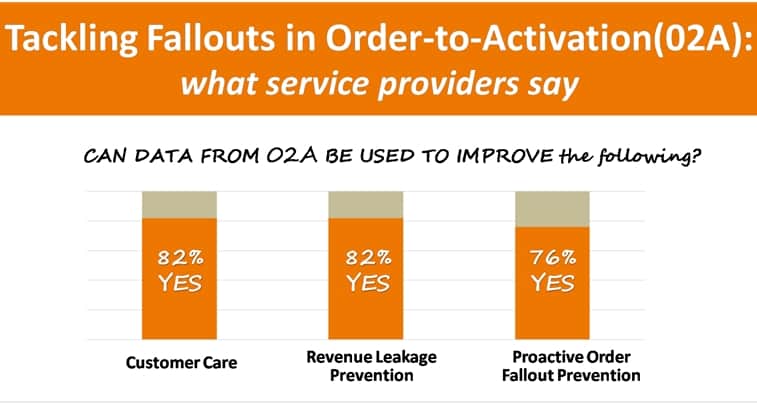- Order-to-activation (O2A) is a critical business process across any enterprise dealing with subscribers, and in the telecommunications business, is one of those areas crucial to growing the subscriber base, increasing customer satisfaction and creating strong brand reputation. Fallout in the O2A phase leads to unnecessary loss in revenues, and increases operational and management complexities. While other business areas have benefited from the use of analytics that provide insights to what, how and where things go wrong, the use of analytics and business intelligence in the O2A process is still at its experimental stage. Towards this end, Amdocs, the provider of customer experience systems and services yesterday released the findings of a global survey which illustrates the potential of adopting business intelligence (BI) and analytics tools within this area. The independent research, which was conducted by Ovum on behalf of Amdocs, uncovers the inadequacies in the anaytical and BI capabilities within the O2A areas within operators, from inputs from 100 service providers with multiple lines of business based in EMEA, North America and Latin America.
The key findings from the research shows that overall, service providers are aware of the importance of having the information and insights across all the nodes involved in the O2A process (about 72%), but are still lagging in terms of having the right capabilities and solid platforms that are able to serve their informational needs. Amdocs mentioned KPIs such as the number of complaint calls related to orders and activation lead time which are reported in real-time or near real-time as examples of the type of information that service providers will require to ensure they have a better understanding on the fallout ratios within their services. Main points from the report, as shared by Amdocs, are summarized in the following infographics.

"Data collected during the O2A process enables operators to identify root causes that can serve not only to improve the process itself, but also to improve key business outcomes, such as profitability and the customer experience. To realize these benefits, service providers need to apply robust BI and analytics predictive and prevention tools in order to know what to look for, and correctly predict and prevent order fallout."
- Clare McCarthy, Lead Analyst Telco operations & IT, Ovum
"We are seeing service providers shifting from traditional strategies focused on improving operational parameters within the O2A process, such as order handling time, to predictive models aimed at proactively preventing issues. Such prediction and prevention capabilities, as offered by the Amdocs O2A managed services solution, will become increasingly important as players continue to merge into bigger and more complex multi-play operations, while looking to offer the best customer experience."
- Rebecca Prudhomme, Vice President for Product and Solutions Marketing, Amdocs




















